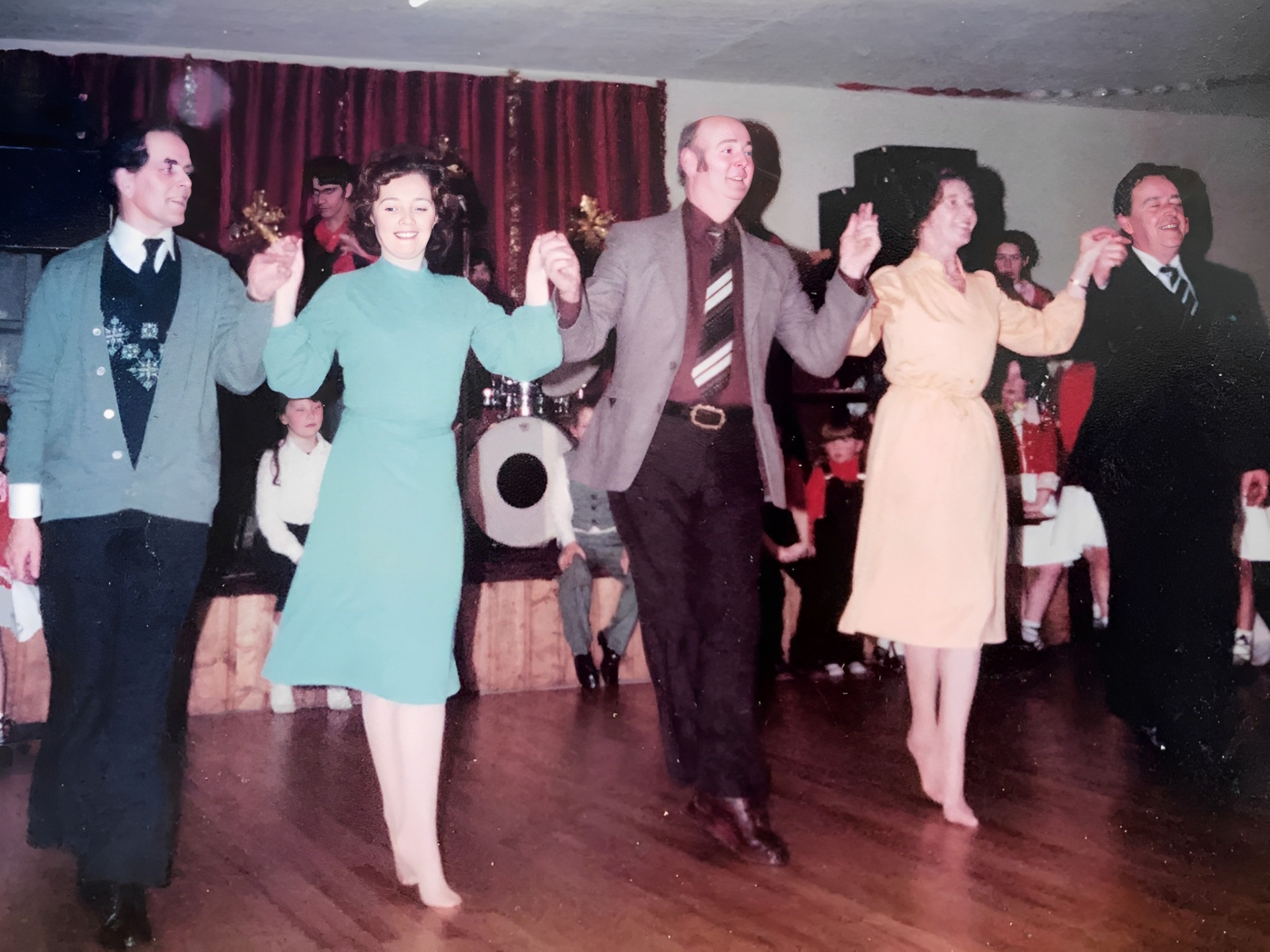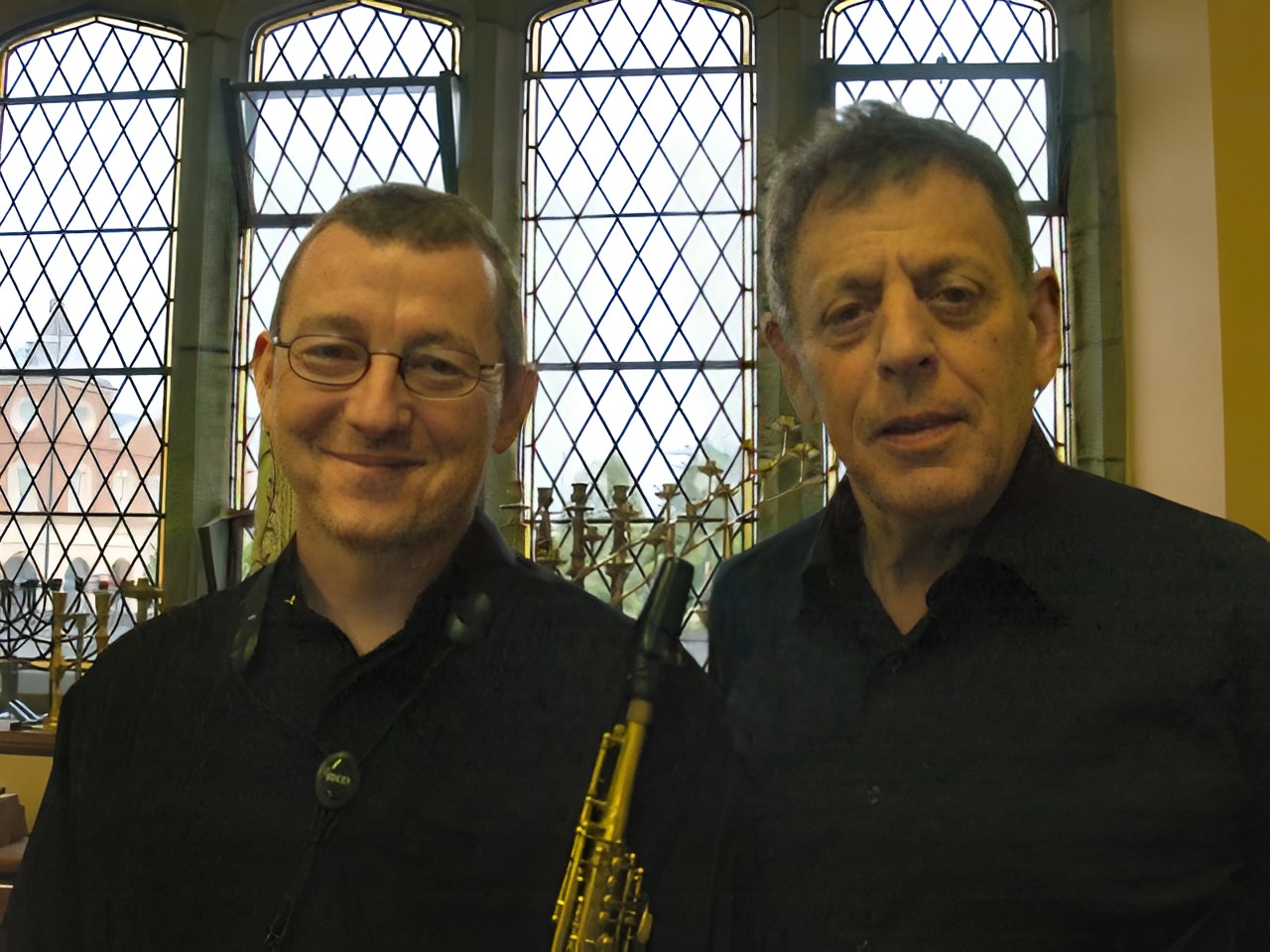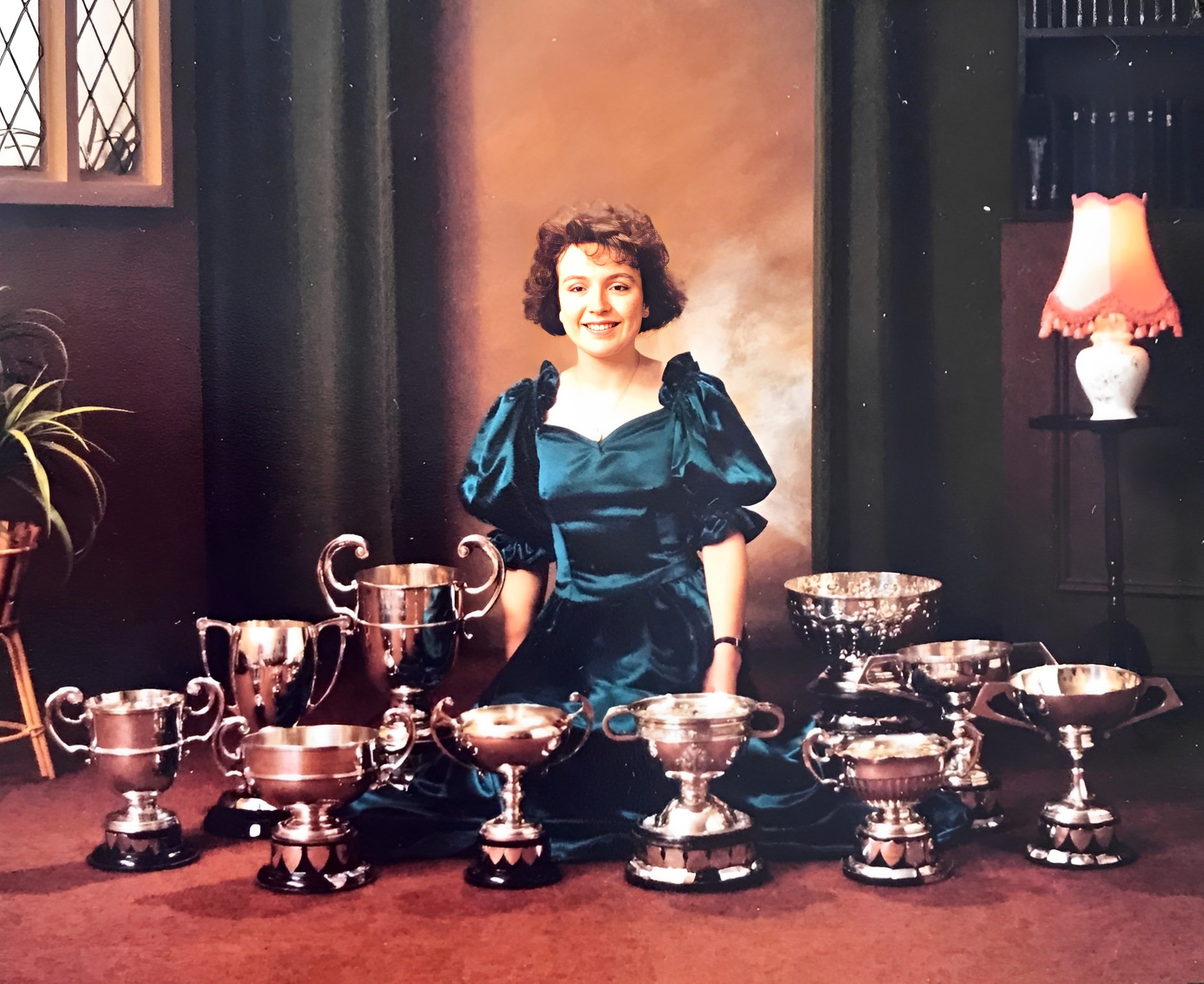
'Feis Dhoire Cholmcille: Celebrating a Century of Culture' - Jam-packed commemorative book.
Former Journalist, Eamon Sweeney, author of soon to be launched 'Feis Dhoire Cholmcille: Celebrating a Century of Culture' is in the Feis Footlights this week.
With his droll Derry wit and very obvious affection for Derry Feis, there really was no better person to write, ‘Feis Dhoire Cholmcille: Celebrating a Century of Culture’ than Eamon Sweeney.
Asked what his favourite part of writing the book was, “The last full stop,” he answered without hesitation and with a grin.
‘Feis Dhoire Cholmcille: Celebrating a Century of Culture’ is due to be launched later this month. It commemorates 2022, the centenary year of this iconic cultural phenomenon.

Some of the best known and most talented dancing teachers to ever to emerge from the North West. From left to right, the late Seamus Kerrigan, Pat Henderson who was interviewed for the book, Dinny McLaughlin and the late Brendan de Glinn.
“The book is intended to be a tribute to those who did not choose a full-time career in the arts,” said Eamon warmly.
“It is to thank those who took part, even if it was just once because these are the people to whom Feis Dhoire Cholmcille owes the greatest debt of gratitude,” he added.
“These are the multitudes who religiously and faithfully attend Derry Feis every year. Pay their money and take their chances. Without them, Derry Feis would not have existed, survived and thrived.
“Yes, we have the famous names, the celebrities, Roma Downey, Dana, Bronagh Gallagher, Phil Coulter and the Feis is very proud of them, but it is to the vast bulk of the people we owe the greatest debt.

The late James MacCafferty who was synonymous with Derry Feis is pictured here in his younger days in front of the piano.
“Derry Feis has battled through some pretty hard times in our society and has displayed the utmost resilience in doing so. I loved getting to hear the thoughts of people I have never really spoken to before. Despite the fact most of these people are 50 odd years of age, in some cases more, the love of the competition they had when they were nine and ten, had obviously never diminished. There was an immense pride in their involvement in the Feis,” said Eamon.
‘Feis Dhoire Cholmcille: Celebrating a Century of Culture’ contains interviews with different people, covering all of the sections of the Feis.
Eamon said: “It first concentrates on how the Feis came about during a period of conflict in Ireland, around partition. That was its genesis.
“Prior to that there was Feis Ceoil, which subsequently became Londonderry Feis. It predated Derry Feis by 22 years. Feis Ceoil was established in 1900 by Alexandrina McCausland Stewart, who had a very prestigious musical background in Dublin.

Internationally renowned saxophonist Gerard McChrystal pictured with legendary American composer Philip Glass.
“She was able to go and ask for advice at the very famous Feis Ceoil in Dublin. She took a lot of the itinerary and brought it back to Derry, where she lived. She was married to a man called McCausland who was a very wealthy merchant.
“Alexandrina Mc Causland Stewart actually sang with the famous Hallé Orchestra in St Columb’s Hall. Her husband died very young and she went back to Dublin to her family. That coincided with the partition of Ireland and that is where the schism in the feis movement happened.
“Alexandrina Mc Causland Stewart had brought the Gaelic League onboard and included elements of the Irish language and music in her feis. However, when she went back to Dublin and in the aftermath of partition, the programme for the subsequent Londonderry Feis stipulated all singing had to be conducted in English and church music could be conducted in English or Latin only. It became very obvious the Irish element had been removed and the Gaeilge League withdrew its support immediately,” said Eamon.
This led to a series of meetings between Mrs Edward Henry O’Doherty and Fr John Logue McGettigan. They, with other people, began assembling ideas for what became Feis Dhoire Cholmcille.
“The plan was to get the Feis up and running that year,” said Eamon, “all against the backdrop of a looming civil war in Ireland. For the first three years, the feis took place in June and from 1925 onwards it claimed a home at Easter.

Renowned operatic performer Una Carlin who was interviewed for the book pictured with a vast array of her Feis prizes.
“Its first home was the Guildhall and the first batch of entries amounted to about 600 which was very strong,” said Eamon, who has also honed in on the early adjudicators.
“Rose O’Doherty felt that in order to give this new Derry Feis some kudos it was necessary to bring the best of the best in terms of adjudicators, so the three that were initially brought up were, Dr Larchet, Arthur Darley and Annie Patterson.
“The story of the Feis medal is fascinating. We discovered it was designed by a nun in Dublin. She was originally Elizabeth Hogan. Her mother was Italian and her father was John Hogan, a very prominent 19th Century ecclesiastical sculptor. He is also responsible for the statue of Daniel O’Connell which still stands outside Dublin City Hall today.
“Elizabeth and her sister attended Loreto Abbey, Rathfarnham but Elizabeth then decided she was going to take religious orders. She took the name Clement and used that for the rest of her life.
“She then spent her career as the art teacher in school. But how did she end up designing the medal for Feis Dhoire Cholmcille? The archivist at the Loreto Abbey in Rathfarnham was able to tell us Elizabeth’s sister married a man from Carndonagh and they lived in Binion House.
“We can only assume, somebody from Derry knew these people in Binion and when the question was asked, ‘Who would design the medals?’ Elizabeth’s sister said, ‘My sister is a nun in Dublin and she is a great artist,’” said Eamon.
The rest of ‘Feis Dhoire Cholmcille: Celebrating a Century of Culture’ is broken down into the various disciplines in the Feis, instrumental music, singing, dancing, traditional music, Teanga, and speech and drama.
There are interviews with several people in each section, where they relate their Feis stories about feiseanna past.
Eamon said: “The whole purpose of the book was to go from 1922 right up until 2022 and show that timespan of 100 years.
“Then we relate about the CentenaryGala Concert last Easter, which was largely spearheaded in terms of production by Eoin O' Callaghan. We reflect back to 1922 when everything was handwritten and we relied on the print media and newspapers in the city to relay the information.
“Compare that with the Centenary Concert which was streamed live. We have had a revolution in technology in the last 100 years. We are now very strong on social media. We are also using all of the images we were sent by the parents of young prizewinners last year displaying their medals. We have included about 100 of those images in the book in collage form.
“‘Feis Dhoire Cholmcille, Celebrating a Century of Culture’ concludes with a look towards the next 100 years but it looks forward by looking back in a fictional scenario which takes place in Good Friday 2122. You will have to read the book to find out more.”
Details of the launch of ‘Feis Dhoire Cholmcille: Celebrating a Century of Culture’ will be issued on the Derry Feis social media channel soon.
Subscribe or register today to discover more from DonegalLive.ie
Buy the e-paper of the Donegal Democrat, Donegal People's Press, Donegal Post and Inish Times here for instant access to Donegal's premier news titles.
Keep up with the latest news from Donegal with our daily newsletter featuring the most important stories of the day delivered to your inbox every evening at 5pm.